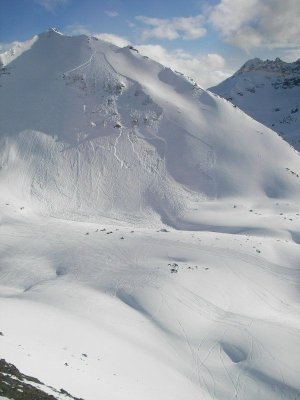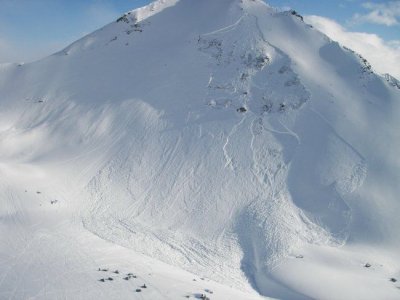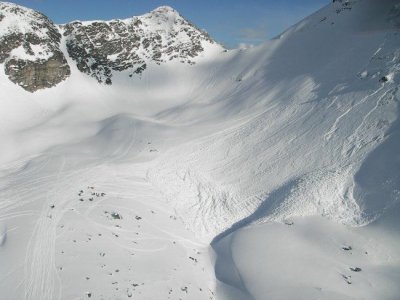AvyDaze
Active member
Hi forum users,
John Kelly here, Operations Manager at the Canadian Avalanche Centre
Another fatality occurred yesterday in Clemina. We are very saddened to see so many fatalities and so many fellows not coming home after what is supposed to be a fun recreational activity in the mountains. Please help us to get the word out about this season's snowpack and the need to leave an extra safety margin.
We continue to see very similar terrain in many of the avalanche accidents and incidents this season.
1. Fairly shallow snowpack area (less than 2 m or 6 ft)
2. Rocks or shrubs poking through the slope
3. Lots of variation in the snow cover depth
4. Some bulges or convexities on the slope where the avalanche is triggered.
5. Steep 40 degree + terrain
I have read many of the posts relating to avalanche safety on the site and i have some comments on general themes that may be helpful to some of the less experienced and less prepared sledders who are beginning to learn about managing avalanche safety.
Avalanches don't often sweep down from above unannounced. Over 90% of fatal avalanches are triggered by someone in the group.
Avalanche terrain includes steep terrain over 35 degrees as well as obvious avalanche chutes. If you can't recognize avalanche terrain then you need to go with someone who can, and take it really easy until you get the idea.
Different slopes are dangerous or safe at different times of the day, different times of the week, month and year. Some years have much worse danger than others. You really have to read the bulletin.
Any open slope anywhere can avalanche if it is greater than 30 degrees steepness and gets more than a metre of snowpack.
Here are some pictures sent to us by the BC Coroners Service from Clemina Creek and i would like to share them with you. Please note the factors i mention above as well as the serious terrain trap at the bottom of the slope.
There are more photos of avalanche terrain from this year's fatal accidents at: Canadian Avalanche Centre look in the left panel under "avalanche incident photo analysis".
John Kelly here, Operations Manager at the Canadian Avalanche Centre
Another fatality occurred yesterday in Clemina. We are very saddened to see so many fatalities and so many fellows not coming home after what is supposed to be a fun recreational activity in the mountains. Please help us to get the word out about this season's snowpack and the need to leave an extra safety margin.
We continue to see very similar terrain in many of the avalanche accidents and incidents this season.
1. Fairly shallow snowpack area (less than 2 m or 6 ft)
2. Rocks or shrubs poking through the slope
3. Lots of variation in the snow cover depth
4. Some bulges or convexities on the slope where the avalanche is triggered.
5. Steep 40 degree + terrain
I have read many of the posts relating to avalanche safety on the site and i have some comments on general themes that may be helpful to some of the less experienced and less prepared sledders who are beginning to learn about managing avalanche safety.
Avalanches don't often sweep down from above unannounced. Over 90% of fatal avalanches are triggered by someone in the group.
Avalanche terrain includes steep terrain over 35 degrees as well as obvious avalanche chutes. If you can't recognize avalanche terrain then you need to go with someone who can, and take it really easy until you get the idea.
Different slopes are dangerous or safe at different times of the day, different times of the week, month and year. Some years have much worse danger than others. You really have to read the bulletin.
Any open slope anywhere can avalanche if it is greater than 30 degrees steepness and gets more than a metre of snowpack.
Here are some pictures sent to us by the BC Coroners Service from Clemina Creek and i would like to share them with you. Please note the factors i mention above as well as the serious terrain trap at the bottom of the slope.
There are more photos of avalanche terrain from this year's fatal accidents at: Canadian Avalanche Centre look in the left panel under "avalanche incident photo analysis".






